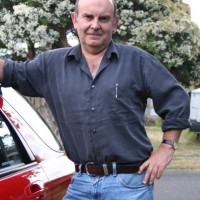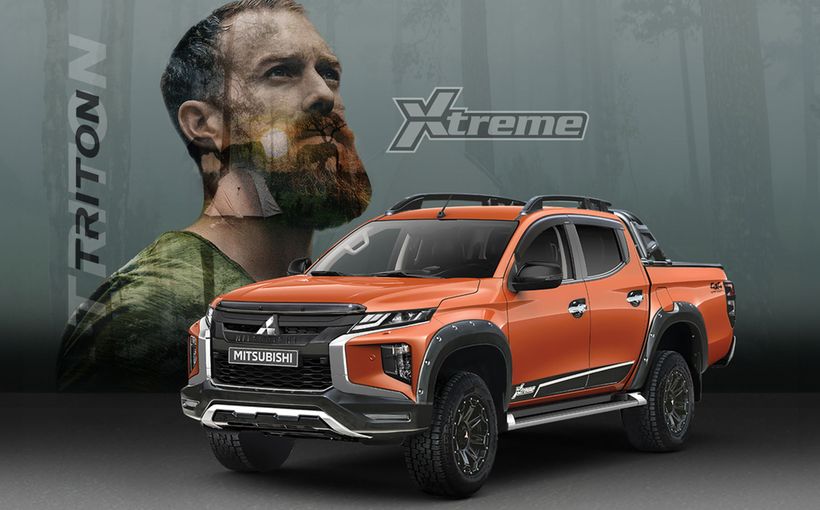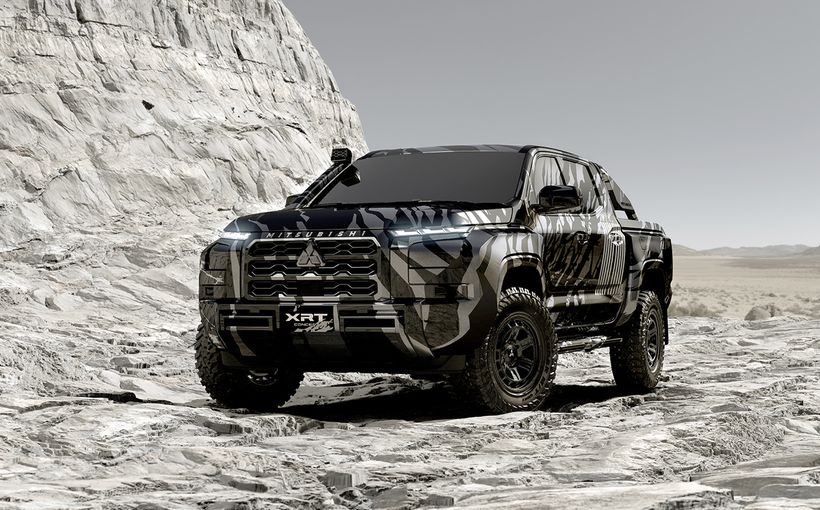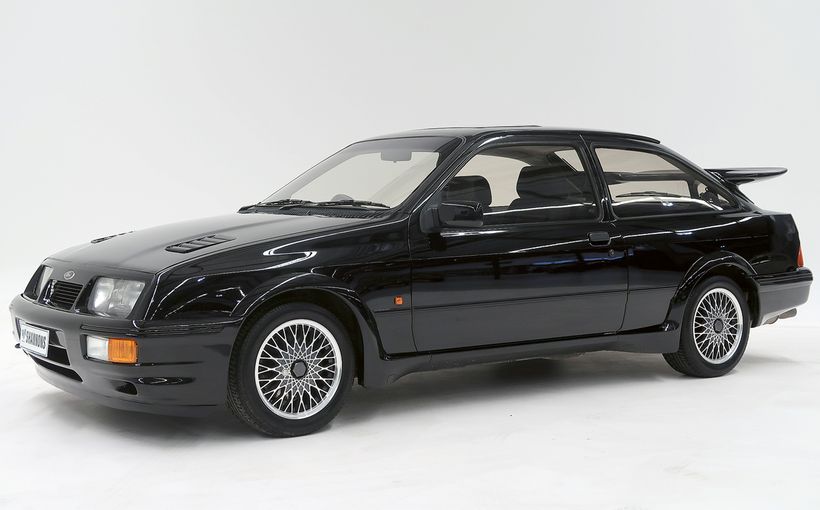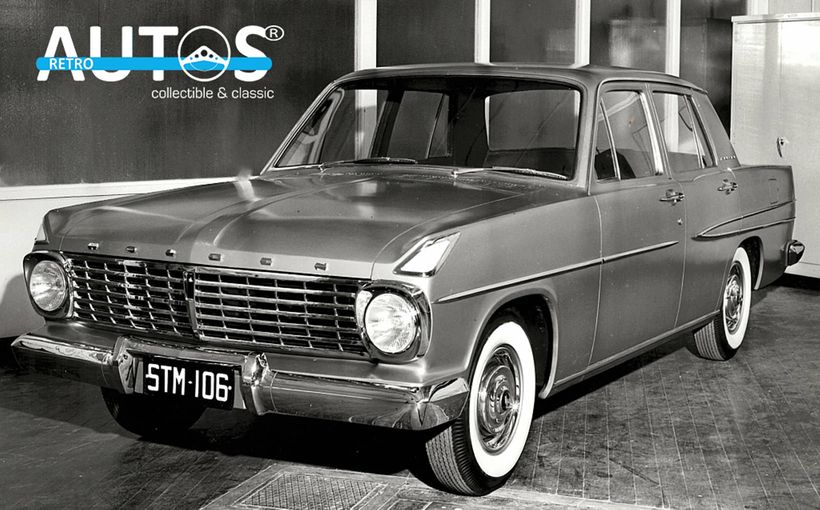1982-87 Mitsubishi Starion: A Star Gaze into the Future

The May 1982 arrival of the Starion marked a halfway point for a torrent of new Mitsubishi models that pre-empted new Australian automotive priorities by decades. The Starion was an important image builder for this early 1980s Mitsubishi growth spurt. Its mechanicals were directly related to at least half of Mitsubishi’s fresh new models and its exterior and interior design provided a context for all Mitsubishi passenger cars.
The related GJ Sigma had arrived only months earlier setting the performance and size parameters for a slightly larger four cylinder package that decades later would replace the big Aussie sixes as the most preferred passenger car. The turbocharged 2.0-litre inline four pioneered by the Starion in its segment has become the performance and economy bottom line in so many 21st century models.

The imminent Cordia Turbo with its variation of the Starion engine would soon provide a glimpse of the 21st century hot hatch. The first Pajero would then re-position the four wheel drive wagon as a practical and affordable everyday family car.
The first Nimbus would later define a smaller, more frugal multi-passenger MPV. An all-new Colt defined a new entry class of budget hatchbacks that would later sire the Hyundais that completed the process. In the delivery van and rapidly growing people mover sector, a new Express van had already defined a more nimble and frugal alternative to mainstream vans, again with mechanicals related to the Starion.
It was an amazing period. As so often happens, others were quick to exploit the new ground and ultimately overtook Mitsubishi in the process. Until that occurred, Mitsubishi broke down barriers with new models that were as much evolutionary as revolutionary. Yet they were devastatingly effective after Mitsubishi translated once esoteric and forgotten technology into mainstream models reliably and cheaply.
As a subtle and unassuming challenger to the established performance coupes, the Starion was a stealth showcase for Mitsubishi’s new found engineering and price leadership. Its balance of economy, performance, comfort and refinement over all roads was challenged only by the Porsche 944. Even then, this was no shame given Starion’s stellar price advantage and the 944’s reliance on Mitsubishi’s new engine technology.

As for the Starion name being a Jinglish version of Stallion versus Mitsubishi’s much hyped suggestion that it was a combination of Star Orion, anyone who has encountered Japanese honour would not be surprised if the second explanation was presented as the perfect cover for the first! To be fair, the Conquest badge that it wore in the US as a Dodge/Plymouth then Chrysler generated expectations beyond the US model.

Mitsubishi’s Emerging Technologies
As Japanese companies scrambled to revive and hone different technologies as a point of difference, Mitsubishi chose a middle line between the conservatism of Nissan and Toyota and the daring of Honda, Mazda and Subaru.
The key to Mitsubishi’s new found success was refining Frederick Lanchester’s invention of 1911. All inline four cylinder engines are inherently out of balance. Because this is generated by the relative position of an inline four’s pistons and conrods as they travel through the various strokes, normal engine balancing won’t eliminate it. It becomes more pronounced as capacity increases, regardless of bore or stroke.
This explains Subaru’s early commitment to the boxer engine where opposing imbalances cancel each other out. Meanwhile, Toyota and Nissan had committed to new small inline sixes so the extra cylinders could cancel out these imbalances at the expense of extra internal friction. This also provides an insight into why Mazda persisted so long with the rotary for anything beyond its 1.8-litre fours.
Lanchester’s idea was to add a secondary harmonic balancer to cancel out these forces.
Mitsubishi extrapolated on Lanchester’s work by developing two counter-balance shafts that could cancel out a wider range of engine imbalances with different imbalances of their own. The Mitsubishi solution was different and effective enough to generate a new patent.
These balance(r) shafts are so common in modern engines they are no longer noteworthy but in 1975, Mitsubishi’s release of the “Silent Shaft” inline four cylinder engine was ground-breaking. It featured two shafts driven by a chain from the oil pump, one diagonally below the crankshaft and one above, both rotating at twice engine speed. As the upper shaft rotated with the crankshaft, the lower shaft rotated in the opposite direction. The combination cancelled out rolling vibration as well as vertical forces.
The parasitic power loss from driving these shafts was offset by a lighter and more compact engine with lower internal friction compared to an engine of the same capacity with extra cylinders. Both priorities are top of mind in 2014.
As Mitsubishi refined the concept in its new Astron engines, it not only transformed the Mitsubishi range but other companies such as Porsche and Saab soon licensed the technology from Mitsubishi. For the 944, Porsche used a separate toothed belt to drive the balance(r) shafts claiming a big reduction in noise levels.

The Astron engine not only established the Sigma as the new family four of the moment because of its smoothness but the Silent Shaft technology later allowed a big 2.6-litre version for outstanding torque and flexibility levels. However, not all Mitsubishis needed such a big engine.
Mitsubishi developed a second engine family with balance shaft technology called Sirius, a lighter, smaller and freer-revving design than the Astron family. Like the 944, its balance shafts were driven by a toothed rubber belt.
Although US versions of the Starion came with a 2.6-litre Astron engine more suited to slogging as an auto at low revs on low grade unleaded fuels, Australian examples followed the sportier European version with a special Sirius 2000 engine and five speed manual only.
Available as the 1.8 4G62 in the Cordia Turbo, the similar Sirius engine in the local Starion was the 4G63 2.0-litre single-overhead cam version. As part of making the most from this smaller and lighter mechanical package, the Starion engine featured fuel injection and a tiny Mitsubishi turbo, a first for a vehicle in this class.
The throttle-body fuel injection system was not a full multi-point injection and the turbo boost management (ECUs were not yet powerful enough to map every scenario at low and high revs so there were compromises at both ends) was not as sophisticated as it is today. Yet the Starion engine was knocking on the door in 1982 of what is now widely regarded today as the optimum engine specification for power, economy and packaging. It led to claims that it was the fastest 2-litre at the time.
Up against the bigger sixes of its Nissan 280ZX and Alfa GTV rivals and the thirsty but smooth performance of the Mazda RX-7, the Starion on Australia’s leaded fuel challenged the Western pre-occupation with cubic inches and multiple cylinders. It was as quick as anything with an engine one third bigger and economy only slightly worse than a normal 2-litre, depending on the driver. As soon as engine microprocessors caught up with the hardware, it has since proven the way of the future.
For Australians, the Starion also proved unusually well-suited to rally-type conditions with sophisticated suspension and outstanding balance. The Sirius 2000 engine had already been proven in the rear drive Lancer Turbo, a formidable rally weapon that was a precursor to the later Lancer EVO models.
The Starion platform was also developed from the sports hardtop Sigma model Australians knew as the Scorpion. More a Sigma-based Celica challenger in Australia without the gender bias, the top Scorpion level in Japan was a far more serious package that featured fully independent rear suspension.
The Starion therefore arrived in Australia with an unusually well-sorted engine proven under rally conditions. Its sophisticated independent rear suspension featured struts and A-arms, similar to those found under a Lotus rear end.
By avoiding the nasty camber and toe changes of the more common rear semi-trailing arm designs of the times, Mitsubishi could allow the Starion more suspension travel than usual hence its outstanding point to point ability over poor Aussie roads. Mitsubishi resisted early pressure to replace its higher profile Michelin XWX radials with more aggressive rubber to preserve this capability.
In fact, the matching sophisticated geometry of the Starion’s front and rear strut suspension was often mentioned as a standout feature. Its four wheel ventilated disc brakes were also at the top for performance.
Last but not least was the respectable if not outstanding drag factor of 0.35, a reflection of Mitsubishi’s more careful attention to exterior surfacing than its Japanese rivals at all levels without resorting to a specific aero shape.
Although not ground-breaking, the Starion’s flush one-piece doors with their unusual forward and out dual-pivot hinging, and seat belts integrated into each door, were worthy attempts at addressing typical coupe shortfalls.
Although it was criticized at the time for looking too fussy, the Starion with its clever development of lesser Mitsubishi styling, has survived the test of time as more than just another bland and anonymous wedge of the era.

The Quiet Achiever
In 1982, the $19,950 JA Starion’s natural competition was the Mazda RX-7 at $17,520, the Alfa Romeo GTV 2.0-litre, an also ran at $19,400, Datsun 280ZX at $19,990 and Porsche 944 at $31,694.
The 280ZX was dismissed at the time as a luxury coupe with sports car looks but was too slow and ponderous from the driver’s seat to be considered a sports car.
Until the GTV6 arrived, Alfa buyers had to go it alone with a local fit Autodelta turbo kit that pushed the price to almost $30,000. Although a hot performer, the add-on turbo still fed the standard carburetors and moved it further away from the everyday single car role that middle-level executives who bought these models required.
This left a tight slugfest between the Starion, RX-7 Series II/III and Porsche 944. The Starion offered clear advantages even if it wasn’t always an outright winner. With 125kW/245Nm, it was the most powerful (versus the RX-7’s 84kW/152Nm and the 944’s 120kW/205Nm) but also the heaviest at 1265kg (about the same as an optioned-up VH Commodore). This would later translate into being the toughest for rally-style conditions and a prestige feel on the road.

It had the longest wheelbase (2435mm versus 2400mm for the Porsche) and was the highest. It therefore had the roomiest and most generous back seat. With its fold down rear seat, the Starion’s shallow luggage area dictated by its sophisticated independent rear suspension (the RX-7 still had a live rear axle at this point) could easily be expanded for a weekend getaway for two. It was also relatively wide within the Japanese 1700mm limit but some way short of the 944’s 1735mm European wide body.
Although it couldn’t match the 944’s rack and pinion steering for feel and accuracy, the Starion was alone in featuring power steering as standard, a big advantage for the dual purpose everyday role required in this class.
Where the Starion did really well was against the stop watch and as a relaxed long distance tourer. Although the RX-7 would beat it to 50km/h, the Starion would then leave it behind as the turbo kicked in and allowed it to narrow the gap on the 944. Its 0-100km/h time of 8.9 seconds versus 9.8 for the RX-7 and 8.1 for the 944 highlights their relativity.
The Starion’s 16.2 seconds for the standing 400m was respectable compared to the RX-7’s 16.6 and 15.9 for the 944. Fuel consumption under performance testing was higher than both the RX-7 and 944 but it was capable of a 10L/100km figure away from the strip, a figure judged reasonable given the performance, toughness and extra cabin room. (Wheels, September 1982).
Despite its credentials and top of class point to point performance, the Starion was deemed “too sober”, more a threat to the Datsun 280ZX perhaps. Much of that subjective feel could be traced to the more sedan-like architecture of the cabin. Its plainer dash, which worked admirably in function, also had the ambience of a cheaper Mitsubishi sedan. This vital failing so obvious in the showroom was possibly more of an obstacle to Starion sales than any other factor even if the sports seats were outstanding.

This influenced the JB facelift of September 1985. Although output remained the same, the turbocharger was now water-cooled hence the bigger radiator and removal of the bonnet scoop and slots. The fuel injection and ignition systems were upgraded.

Wheels and tyres were lifted from the earlier 70 series on 14 inch rims to a wider 60 profile on chunkier-looking 15 inch rims but there was no sign of the five stud wheel centres seen in other markets. Extra lights at the front, a simpler extractor vent behind the doors and an optional two-tone paint scheme generated a cleaner, sleeker effect.
An optional limited slip differential and its September release provided a clue as to where this was all headed. The only downside was a swap from classy leather trim to plain velour with striped inserts.
Although the JB series was little more than a tweak of the JA series and was announced in the third quarter of 1985, it still ran on leaded petrol. This was an unusual development as most new models and facelifts from this point were launched as unleaded models.

Mitsubishi had to slip in this interim JB series between September and December 1985 to launch an optimum performance specification before Australia’s low grade unleaded crippled the Starion. Although the JB did NOT introduce an intercooler, models in other markets did in mid-1985.
Both the manufacturers and Australian government were engaging in a number of smoke and mirrors exercises to hide the drop from 98 RON Super Leaded to 91 RON Unleaded, equivalent to a return to the 1950s in petrol quality.
Mitsubishi held over the Starion’s intercooler for the JD facelift of December 1985 to hide the true drop in performance, and therefore did not deliver the huge performance boost it did in other markets. It became critical in compensating for this loss of fuel quality which would otherwise generate destructive pinging under load. A new smaller and more responsive turbocharger at lower revs helped cover for the loss of low speed torque that came with Australia’s low octane unleaded fuel.

Despite Mitsubishi’s efforts and the extra hardware, JD Starion power slipped from 125kW to 110kW and torque dropped from 245Nm to 222Nm. The only upside to this equation was the earlier arrival of the JD’s torque peak at 3000rpm, not the previous 3500.
Key body changes included a new front spoiler with a large open central slot for the intercooler and a wraparound three-piece body colour rear spoiler with a centre Turbo badge serving as a blank for the high-level stop lamp in other markets.
The new plush, gathered velour trim might have suited Mitsubishi’s new Magna Elite but in a disciplined sports coupe like the Starion, it was an indicator of a market shift dictated by the stiff price increase, and its softer, weakened performance credentials.

It was not a good time for the Starion to lose focus as the floating Keating dollar pushed the price over $30,000 with the LSD, or around $28,000 list. It was now competing against an Alfa Romeo GTV6 ($32,000), Mazda RX-7 Series IV ($38,000) and Nissan 300ZX Turbo ($40,000).
Its handy price advantage was soon negated by the softer lines of these new generation rivals which made the Starion look more like a hard-edged ‘70s wedge than when it was released. The Alfa coupe had been around so long that it was back in vogue again!
Modern Motor in April 1986 pitched these four against each other producing the following rankings:
Top Speed: 300ZX, GTV6, RX-7, Starion
Acceleration: 300ZX, Starion, RX-7, GTV6
Circuit Times: 300ZX, RX-7, Starion, GTV6
Dirt Road: RX-7, GTV6, Starion, 300ZX
Fuel Economy: GTV6, Starion, 300ZX, RX-7
Brakes: RX-7, GTV6, Starion, 300ZX.
The world had moved on. The ULP Starion under test produced a 0-100km/h time of 9.25 secs and a standing 400m of 16.46. Only slightly worse than the leaded version, the shorter diff ratio had covered for the loss of grunt. However, that ploy was exposed by a best fuel figure that had grown to 12.3L/100km and reduction in top speed. In a post-fuel crisis world, its unleaded rivals had traded fuel economy for grunt and cubic inches leaving the Starion with the best balance between economy and performance.

As other markets resorted to a Starion with a 2.6 Astron Turbo to close the gap, it would not have been enough to address the areas that mattered in Australia where the Starion had fallen behind.
Australians were more familiar with the 2.6 Astron than any other global market (it featured prominently in the Sigma, Scorpion, Magna and Pajero by 1986 and was made here long after other markets had moved on). They wouldn’t have been fooled by what they knew as more of a tractor engine than an inspiring high-performance powerplant.
Wheel arch blisters similar to those seen on the Mazda RX-7 Series IV and Porsche 944 were later added to the Starion to create an export wide body for other markets. Again they could do little to hide a shape already out of date in Australia and the new RX-7 had exposed the Starion family car cabin for what it was. The wide body was also heavier and needed the extra torque of the Astron engine.
There was more to come.
Before the end of 1986, the Starion in Australia was facing a clever and seriously quick Mazda Series IV RX-7 Turbo that also looked the goods, a fast but smooth 300ZX Turbo, and Toyota’s fresh take on the traditional muscle car with an all new Supra powered by a big twin-cam inline six. Australia’s low grade unleaded fuel favoured big engines again as pinging at low revs under load was a critical issue until the arrival of knock sensors and more powerful engine computers.

Starion sales slowed to a trickle and it was all over by 1987 in Australia after the last JD was cleared. Global production ended in 1989.
Beyond 1986, the front drive Cordia Turbo was the more relevant performance model for local Mitsubishi buyers. It was also cheaper, quicker and more agile in everyday use. It was also a better fit with the locally-developed and built front-drive Magna now crucial to Mitsubishi’s local operations.
Yet Mitsubishi did have the last word with the amazing Mitsubishi 3000GT released locally in 1992. A technological showcase, with an entry ticket well over $100,000 towards the end, it arrived at exactly the right time when a new local Magna and Verada were offered as aspirational choices, not just work horses. The Starion was a critical step in getting there.
Australian Starion Notes
Although related to Japanese and European narrow body deliveries, locally delivered examples varied in detail.
JA Series May 1982: Centre bonnet scoop, side bonnet vents, simple blade-style front air dam mounted behind the bumper, small inset indicator/parking lights in front bumper, flush twin vertical slots behind the doors, slender soft-feel black rear spoiler below rear wiper, tail lights divided into block sections, Turbo decals behind doors and RHS liftback, eight spoke 14 inch alloy wheels.
Engine was 4G63 SOHC non-intercooled Leaded 2.0-litre with 125kW, MHI TC06 oil-cooled turbo, System A Throttle Body fuel injection and 3.545:1 open diff.
Look for leather front seat trim with Turbo embossed on front seat panels, four spoke steering wheel with ribbed horn pad, manual exterior mirrors, electric windows with centre console buttons. Early Series I examples had radio aerial in driver’s side windscreen pillar and external fuel filler door lock. Later Series 2 had aerial moved to rear LHS above fuel filler and remote release for fuel filler door beside driver’s seat.
JB Series September 1985: Later JA Series 2 changes plus plain bonnet with no scoops or slots, extra lights in front bumper, Turbo decals in door handles, single raised vertical slot behind the doors, tail lights with three black horizontal divisions, four wide spoke/four narrow spoke 15 inch alloy wheels, optional two-tone paint.
Engine upgraded with MHI TC06 oil and water-cooled turbo, System B Throttle Body fuel injection. 3.545:1 open diff or optional LSD as fitted to most examples.
Look for electric mirrors, four spoke steering wheel with round horn pad, velour seat trim with diagonal pattern inserts and Turbo embossed in base of head restraints.
JD Series December 1985: More integrated front air dam with extra section extending to front bumper, wider horizontal brake cooling slots and open centre intake for intercooler, three-piece body colour rear spoiler extends along sides to rear pillars, centre brake light recess covered by Turbo badge.
Revised 4G63 SOHC intercooled unleaded 2.0-litre with 110kW, smaller MHI TC05 oil and water-cooled turbo, System B Throttle Body fuel injection, cat converter, and 3.909:1 limited slip diff.
Loose-tucked soft trim, LCD digital clock, electric window controls moved to doors with driver’s side override button, upgraded six-speaker sound with graphic equalizer.
Australian JD Starions were withdrawn from sale August 1987, later replaced by JF 3000GT in October 1992.
(Reference: Glass’s Passenger Vehicles Australia 1985 edited by Joe Kenwright, Additional information: austarion.com)
Protect your Mitsubishi. Call Shannons Insurance on 13 46 46 to get a quote today.


